- Home
- TV History
- Network Studios History
- Cameras
- Archives
- Viewseum
- About / Comments
Skip to content
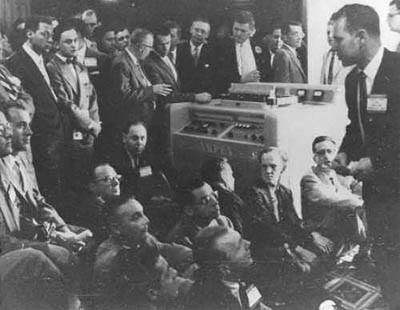

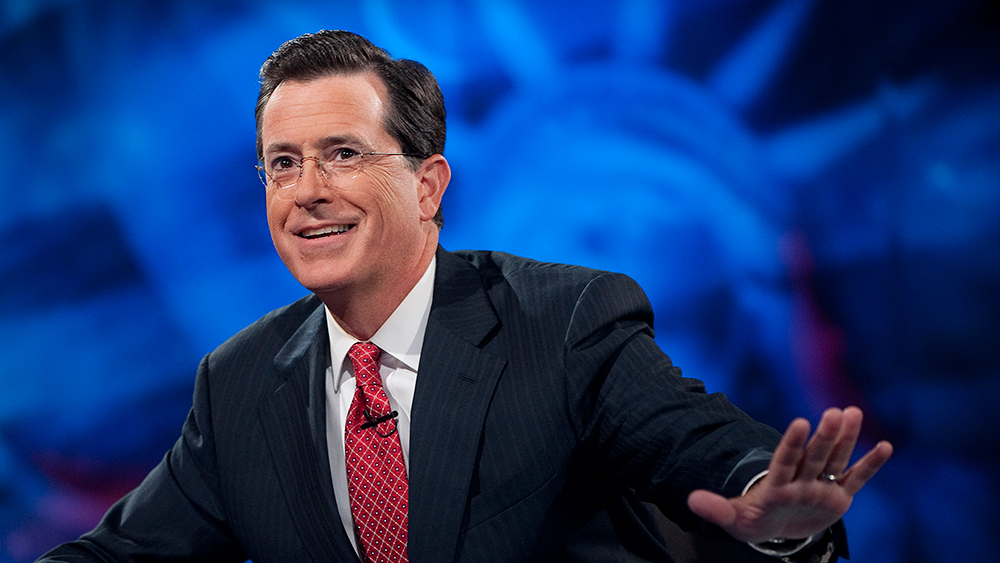

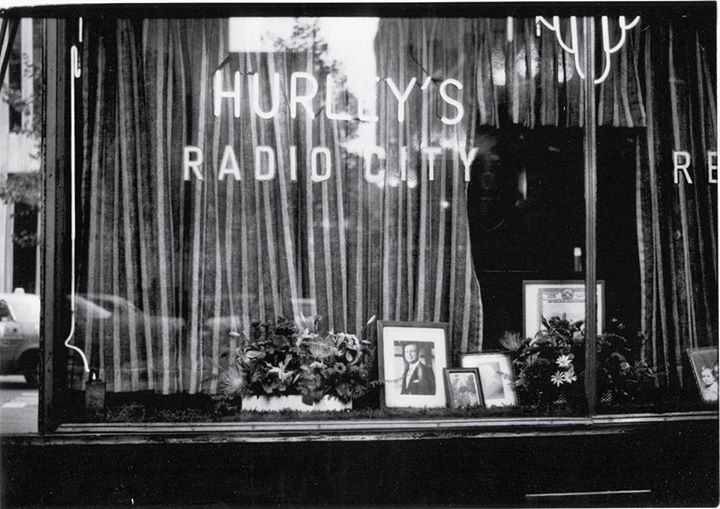

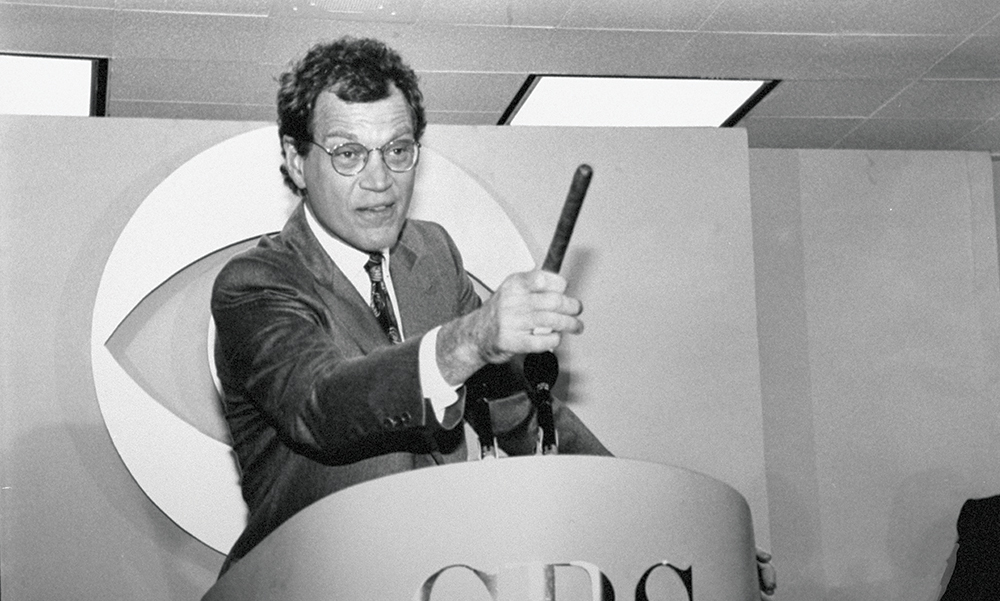

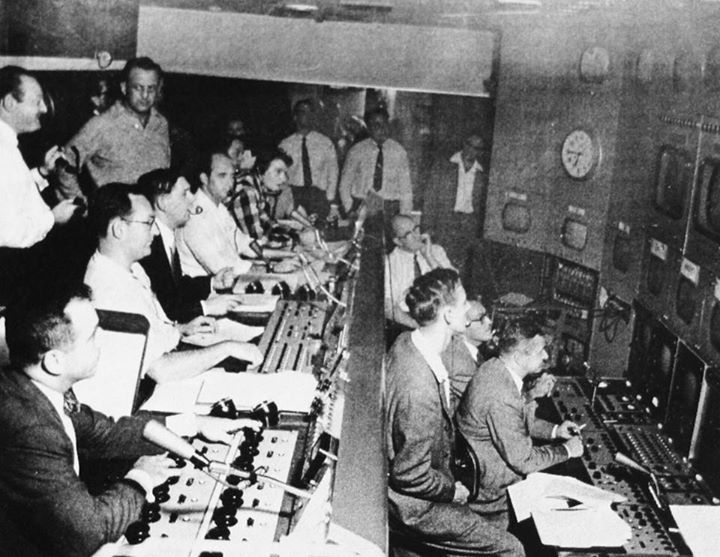

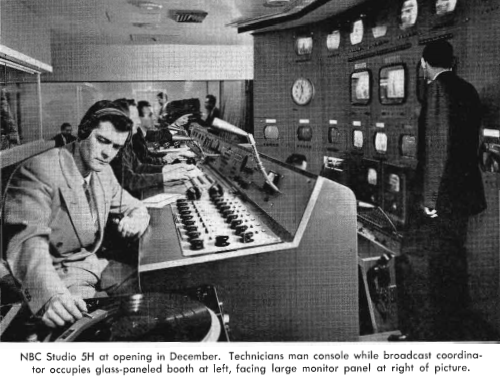

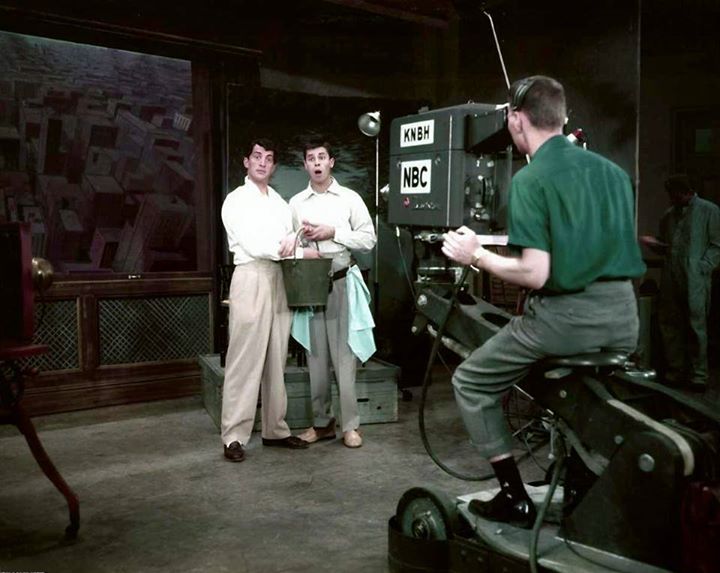



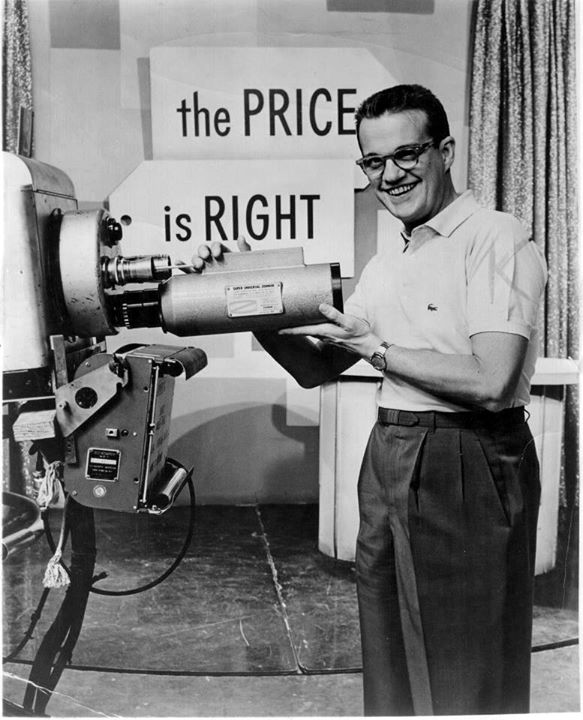

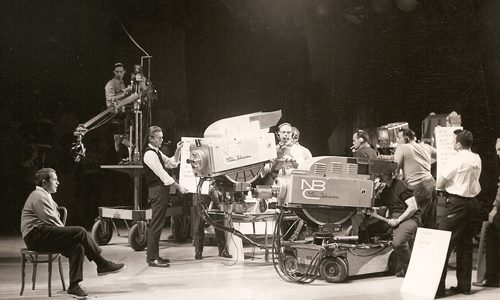

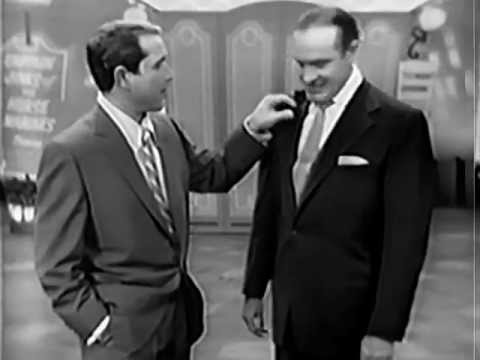

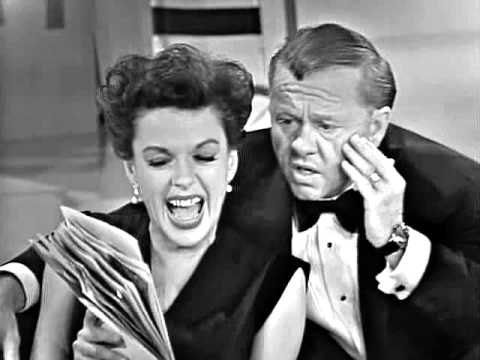

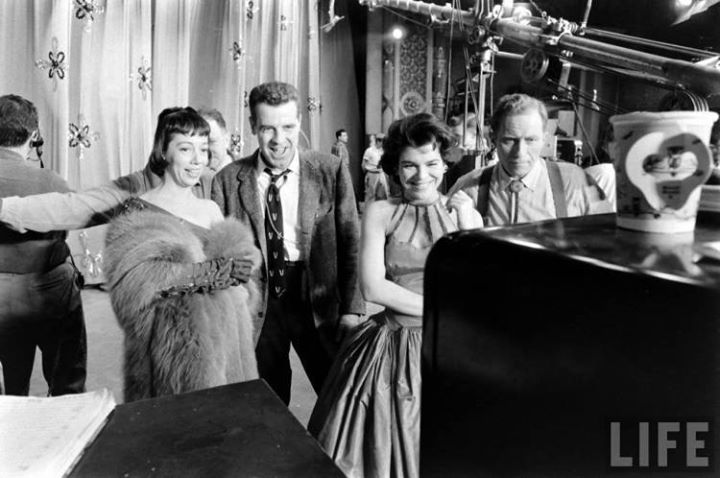

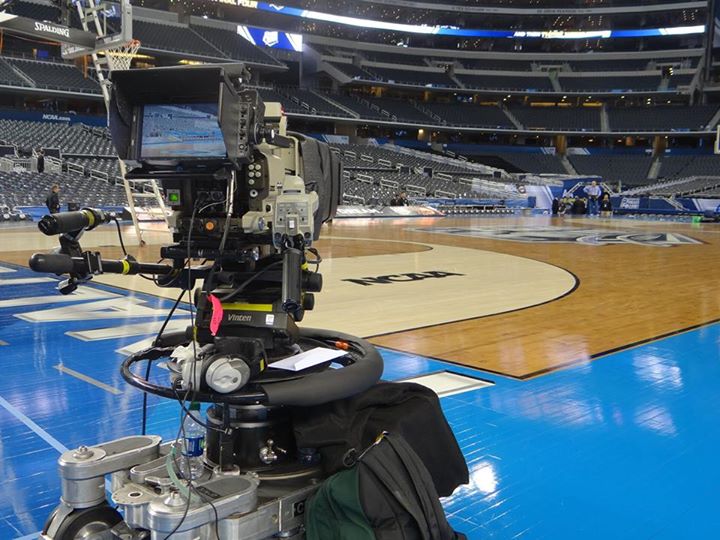

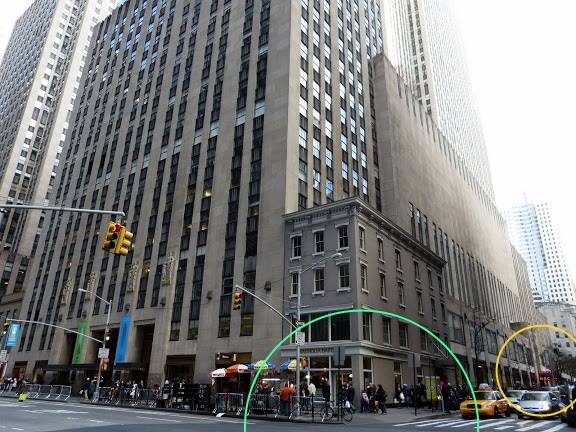

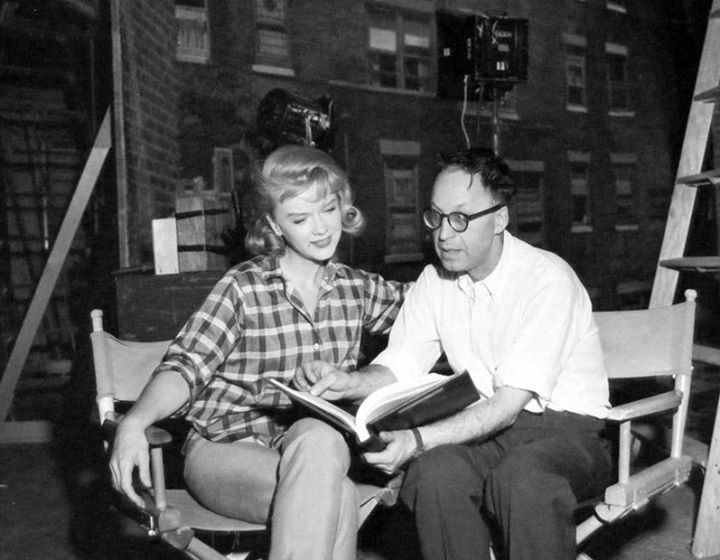

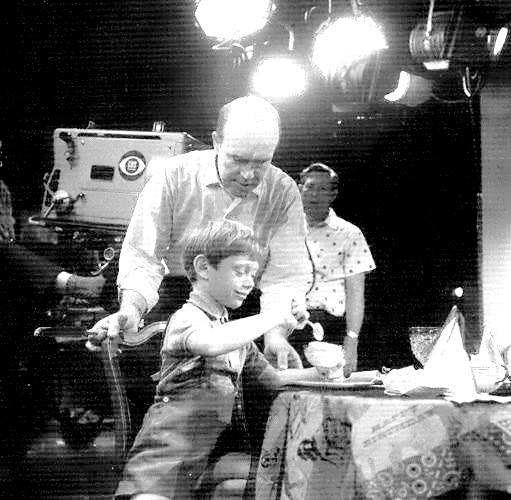

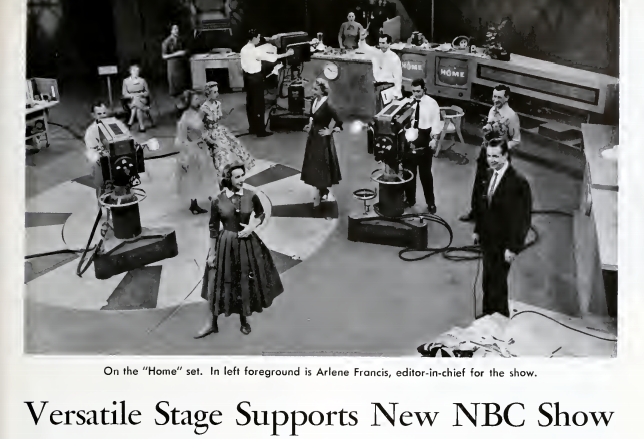

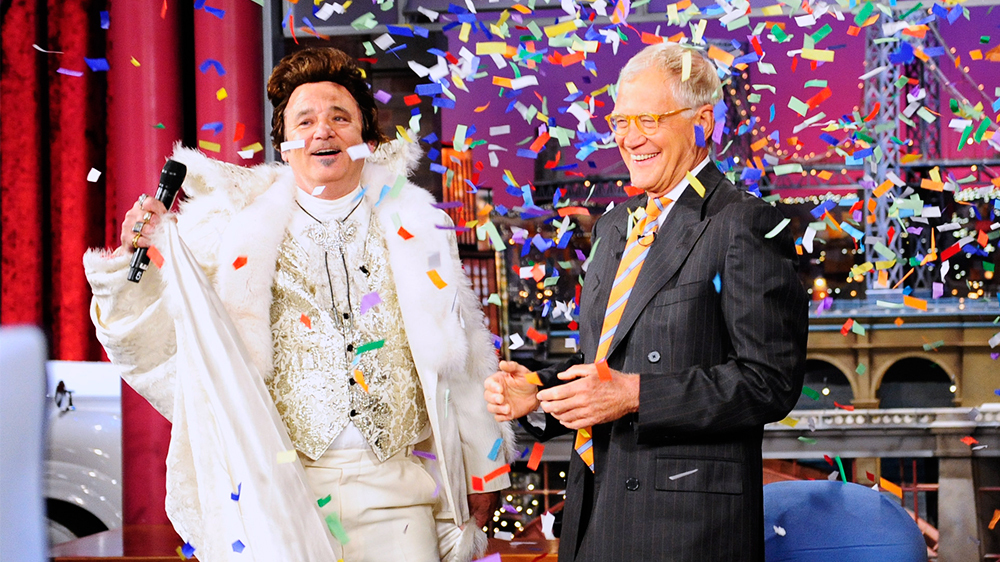



Posts in Category: TV History
Page 85 of 136
« Previous
1
2
3
4
5
6
7
8
9
10
11
12
13
14
15
16
17
18
19
20
21
22
23
24
25
26
27
28
29
30
31
32
33
34
35
36
37
38
39
40
41
42
43
44
45
46
47
48
49
50
51
52
53
54
55
56
57
58
59
60
61
62
63
64
65
66
67
68
69
70
71
72
73
74
75
76
77
78
79
80
81
82
83
84
85
86
87
88
89
90
91
92
93
94
95
96
97
98
99
100
101
102
103
104
105
106
107
108
109
110
111
112
113
114
115
116
117
118
119
120
121
122
123
124
125
126
127
128
129
130
131
132
133
134
135
136
Next » April 11, 1956…Ampex Debuts Video Tape At NAB
On April 11, 2014
- Archives, TV History
April 11, 1956 is a day that truly changed television! Here it the story of that day and the hectic months at Ampex that followed this blockbuster announcement.
On April 11, 1956, Ampex engineers Phil Gundy and Charlie Ginsburg introduced one of two existing video recorder prototypes to the National Association of Radio and Television Broadcasters (NARTB) Convention in Chicago, later renamed the National Association of Broadcasters (NAB). The second prototype had its introductory demonstration simultaneously in Redwood City.
What was unforgettable about the 1956 introduction was the event that occurred the day before the opening of the convention in Chicago; the April 10th CBS annual meeting for television personnel, held at the same convention center.
This was to be a “state of the company” presentation by Bill Lodge who was head of television affairs at CBS. The meeting was to be held in a small auditorium that was about 100 feet deep and maybe 70 feet wide. Three television monitors were spaced along each side, so that all in the audience could see and hear Lodge as he spoke at the podium. There was a curtain behind him as he stood at the podium. CBS personnel and affiliates began to stream in and take their seats – maybe 200 in total. Little did they know what Bill Lodge and Ampex had in store for them!
Earlier that morning, Charlie Ginsburg and Charlie Anderson had set up their Ampex videotape recorder behind the curtain so it would not be seen by the audience – at least at first. Fred Pfost arrived a short time later. Together, they checked out the system, and it was working perfectly; they were ready! Pfost started the recording as Lodge made his introductory remarks, continued with his presentation of what CBS had accomplished in the current year, and described his plans for the coming year. He mentioned a rumor that many had heard – that Ampex was working on a videotape recorder – and said that he had visited Ampex and was impressed with their development project, and had given them a small contract to help finance their development efforts.
Then, Bill Lodge opened the session to questions and answers. That was the signal for Fred Pfost to rewind the tape. When Bill received the signal that the tape was ready to play, he concluded his presentation with much applause. That was Fred’s cue to press play: when the audience saw the replay on the same monitors as the original presentation, they went wild with shouting, screaming, and whistling. When the curtains were opened to show the Ampex videotape recorder, some stood on their chairs to get a glimpse of it. These television people realized that what they were seeing for the first time was a recorder that would greatly simplify production of video programs and also be an excellent answer for recording delayed television broadcasts.
What Ampex had just done for the television industry is the same thing it had done for both the radio and audio-recording industries some seven or eight years earlier. This was truly a revolutionary moment for television. Fred Pfost has said that every time he tells the story of this event, it brings tears to his eyes. He still feels it is one of the most exciting moments of his life. When the Convention opened the following day, everyone had heard about the introduction of the Ampex videotape recorder at the CBS meeting, and Phil Gundy announced that 11 presidents of the major television networks from around the world were standing in line to see the recorder – and learn how soon they could purchase it.
In less than a week, he received orders for 45 Model VR-1000 recorders at $45,000 each. Phil also received a contract from CBS for modified prototypes (similar to the one shown at the Convention) with the proviso that the network get them soon as possible. These required custom engineering, and cost considerably more.
With the introductions over, Ampex now had to redesign the prototypes for production, tool them, produce them and ship them all by April, 1957 in order to meet the beginning of daylight saving time that year. John Leslie headed an overlay team that bridged application engineering, product engineering, manufacturing engineering, manufacturing and quality assurance. Ampex shipped the VR-1000 recorders on schedule.
CBS Television City got the first five and NBC Burbank got the next three. The deliveries were made the same month NBC Brooklyn II, Burbank Color City Studio 4 and, the all color, Ziegfeld Theater went into service.
Below the first VR 1000 ready to ship and a bottom, the November 30, 1956 first-ever, nationwide tape-delayed broadcast. CBS replayed ‘Douglas Edwards With The News’ from CBS Television City for the Mountain and Pacific time zones.
Stephen Colbert to Replace David Letterman
On April 10, 2014
- TV History
BREAKING NEWS! COLBERT TO REPLACE LETTERMAN!
http://variety.com/2014/tv/news/stephen-colbert-to-replace-david-letterman-1201155423/
Stephen Colbert to Replace David Letterman
The CBS Television Network today announced that Stephen Colbert, the host, writer and executive producer of the Emmy and Peabody Award-winning “The Colbert Report,” will succeed David Letterman as …
When Jack Paar Walked OUT, Here’s Where He Walked IN…
On April 10, 2014
- Archives, TV History
Notice the photo in the window of Jack Paar. Hurley’s was where Jack Paar went the night of February 11, 1960…the night he walked off the ‘Tonight’ when a network censor edited out one of his jokes from the previous night’s taped broadcast. Paar wasn’t really hiding, but didn’t want to be inside NBC or talk to the people calling him on the special NBC phone on the bar.
I think this picture was taken between February 11 and March 7, 1960 when Paar returned to the show. Thanks to Glenn Mack for this amazing photo which also happens to be the first and only photo of the original Hurley’s Bar that we know of.
On October 15, 1975, Hurley’s closing, after 70 plus years was covered on NBC’s ‘Tomorrow With Tom Snyder’. Below is the NBC description of that episode.
“This show marks the end of Hurley’s, a local bar on 49th Street in NYC frequented by NBC personalities and employees, which is closing after 70 years. This also begins the third year for the tomorrow show. Tom talks with Steve Allen about the changes that have taken place in New York. He feels a lot of the bad mouthing about the city is done by new yorkers. Then Dave Garroway, Jack Lescoulie and Frank Blair talk about the old days. They started with today on January 14 1952. Blair explains that he got up so early for the show by the time he got to Hurley’s it was his lunch time. Therefore he had a drink and furthered his reputation in that area. Comedians Bob & Ray and Ben Grauer talk with Tom about the days of radio and their transition to television. Kenny Delmar, Don Pardo, Bill Wendell and Lanny Ross tell stories of their careers. Hurleys was known as studio 1H or Hurley’s beach. There was an NBC phone on the bar where employees could be reached.”
What David Letterman Did That Will Never Be Done Again
On April 10, 2014
- TV History
It’s True…Timing Is Everything, Especially In Television
Here’s an interesting read from “Variety” that gives us a close up view of some of the business behind show business deals.
What David Letterman Did That Will Never Be Done Again
David Letterman’s sign-off from CBS’ “Late Show” next year will not only mark the end of an era in latenight, it will bring the curtain down on one of the most unique and lucrative deals ever craft…
Yet Another Magic Moment! The Photo AND The Video
On April 10, 2014
- TV History
Yet Another Magic Moment! The Photo AND The Video
In the NBC 5H story, just before this, I mention ‘Wide, Wide World With Dave Garroway’. This show debuted almost two years after 5H went into service, but below is a photo from 5H taken of the WWW debut broadcast on Sunday, October 16, 1955.
The video above is the opening of that debut show…a 90 minute weekly documentary series. Garroway and the live spots are coming from 8G, but 73 cameras spread across the country are feeding into 5H where the show is switched from. At the 4 minute mark is the great GM live spot delivered from behind a crane mounted TK30.
‘Wide, Wide World’ was telecast live on NBC late Sunday afternoons. Conceived by network head Pat Weaver, and hosted by Dave Garroway, Wide Wide World was introduced on the ‘Producers’ Showcase’ series on June 27, 1955. The premiere episode, featuring entertainment from the US, Canada and Mexico, was the first international North American telecast in the history of the medium.
It returned in the fall as a regular Sunday series, telecast from October 16, 1955 to June 8, 1958. The program was sponsored by General Motors and Barry Wood was the executive producer. Thanks to Joel Spector for this great, rare photo!
By the way…some of the remotes WWW did were some of the hardest EVER! If you thought putting a live network camera on a moving streetcar in San Francisco in 1955 was hard, wait till you read this next part!
Here are the logistics involved in setting up a live remote at Arkansas’ Claypool Reservoir where George Purvis, head of the Arkansas Game and Fish Commission, put 300,000 ducks on NBC:
There were many hurdles. Initially Purvis dealt with how to hide TV cameras, crews, control trucks and the necessary workmen and equipment and how to get electricity and telephone lines two miles (3 km) to the woods.
“To start with, the only way to get to the spot selected was over two miles of muddy woods roads where only tractors had gone before,” Purvis recalls. “The cameras would be two miles from the nearest power line or telephone. This meant using power generators placed far enough back in the woods so as not to disturb the wary ducks. Six telephone circuits were needed to send the audio part of the program to New York.
Even after stringing two miles of wire, there was just one circuit from Claypool’s Reservoir to Jonesboro, 20 miles away. So a radio loop was installed at the barn to cover the 20-mile (32 km) gap.
Camouflaged blinds were built for television cameras and operators, one of which was 40 feet up a hickory tree. An additional blind was built for the remote control truck.
The video would go from the camera to the control truck via the cable, then to an 80-foot (24 m) relay tower 1,000 feet (300 m) back in the woods, then 35 miles (56 km) to another relay tower, then 40 miles (64 km) to a third tower before being sent to Memphis. There it was transmitted 1,200 miles (1,900 km) to New York where the audio and video were combined to be broadcast live. With the electronics in place, the only thing left was to make sure that at an exact prearranged time there would be ducks in front of the cameras — over a quarter-of-a-million of them!
NBC Television’s First Assignable Control Room, 5H
On April 10, 2014
- TV History
NBC Television’s First “Ingest” Center…Studio 5H
In video production, ingest is a relatively new term which simply means to bring a new program or it’s elements into a studio or facility. In December of 1953, NBC completed Studio 5H to do just that. It was a control room into which breaking news stories and remote broadcast could be fed, and switched directly to air or to another studio’s control room.
Of course fully produced programs that came in from Los Angeles, Washington and Chicago , or other originating cities went right into Master Control, and 5H was not at all in competition with that function. Having a dedicated control room capable of handling multiple live feeds was a huge help in producing shows like ‘Wide, Wide World with Dave Garroway’ which always had several live remote feeds from across the nation.
5H did not have a studio for productions, but it did have a small room that could either do audio only narration or, on camera narration. It’s most remembered as NBC’s flash news studio and in the clip, you can see the very first moments of NBC’s Kennedy assassination coverage coming from 5H. There appears to be two cameras in 5H for this, but usually, there was only one and it was always on, as this was the “always hot” studio.
http://youtu.be/vq_GCuOlLuo?t=32s
This facility also had control of it’s own telecine equipment and could insert film and slides. Starting in the 70s, I think WNBC used this studio for it’s five minute overnight local newscasts. Below is the story of it’s start in the January 1954 issue of “Radio News”.
Another Magic Moment! The Photo AND The Video To Match!
On April 9, 2014
- TV History
Another Magic Moment! The Photo AND The Video To Match!
Just before the video clip, which will start at 6:44, there is a classic live Ajax commercial, complete with the “bubba buma bum bum” lyric many of us still remember. This beautiful color photo was taken during rehearsal of ‘The Photographer’ sketch on the March 23, 1952 ‘Colgate Comedy Hour’. It was live from NBC’s Radio City West studios at Sunset and Vine in Hollywood. Dean is a fashion photog and Jerry is an inept window washer.


‘The Comedian’…This ‘Playhouse 90’, Inside CBS Television City
On April 8, 2014
- TV History
‘The Comedian’…Remembering Mickey Rooney
This ‘Playhouse 90’ is a must see for several reasons. First, it’s Mickey Rooney at his best, second…there are RCA TK11s everywhere as this is a “show within a show”. It was directed by one of live television’s best…John Frankenheimer, on February 14, 1957.
This originated from Television City and starts Mel Torme, Kim Hunter, Edmond O’Brien. Adapted for television by Rod Serling, this the story a vaudeville comedian who now has his own TV show…a ruthless egomaniac who demands instant obedience from his staff and heaps abuse on those in lesser positions. Enjoy and share!
http://www.youtube.com/watch?v=g9vdpFeiS2A
Mickey Rooney plays hated TV clown Sammy Hogarth in a ‘ Playhouse 90” drama..Teleplay by Rod Serling.
‘The Price Is Right’…Episode 8,000 Airs Today, April 7!
On April 7, 2014
- TV History
‘The Price Is Right’…Episode 8,000 Airs Today, April 7!
Congratulations to ‘The Price Is Right’, daytime’s #1-rated series and the longest-running game show in television history, celebrates its milestone 8,000th episode, today, so set your DVR!
In the special occasion’s honor, the show is looking back at the most memorable moments and games from its past 42 seasons. Contestants will have the opportunity to play pricing games that were featured in the 1,000th, 2,000th, 3,000th, 4,000th, 5,000th and 7,000th episodes, including the fan favorite Plinko, which celebrated its 30th anniversary last fall. In addition, prizes up for grabs include new cars and trips to Thailand and Hawaii.
Since Bill Cullen started hosting the show at The Colonial Theater in 1956, nearly 70,000 people have played the game with 2.4 million fans in the audience, and TPIR has given away more than a quarter of a billion dollars in cash and prizes. Thanks to Randy West, our friend and well know game show announcer who was mentored by the one and only Johnny Olson, for the news tip. Thanks to Fred Wostbrock for the photos.
‘The Perry Como Show’…Zeigfeld Theater, 1961
On April 7, 2014
- TV History
‘The Perry Como Show’…Zeigfeld Theater, 1961
This is one of my all time favorite photos which I’ve had since Katheryn S. Cole at NBC sent it to me in 1962. After posting this, a few NBC vets have helped me with the crew names, and as best I know, the crew pictured here includes (left to right) on boom, Jerry Caruso, Don Stewart Q cards, Al Camoin on crane camera, Don Mulvaney on boom duty, and Arnie Gold and Carl Marlow on Q cards right. Stewart and Marlo were NBC pages before joining the crew and worked as a team as Como depended on two sets of Q cards to keep the look informal. Not shown is a college student who visited the set a lot and later became a top NBC cameraman, Jan Kasoff.


Perry Como Welcomes Bob Hope, TK41 On Set
On April 7, 2014
- TV History
The Masters At Work…Perry Como Welcomes Bob Hope
This great video clip starts with Hope “waiting in the wings” in front of at RCA TK41. This was just two months after the debut of The Ziegfeld Theater as NBC’s newest color studio. As you can see, Perry is a cool a customer as you will ever find. He was always relaxed and made his guests feel the same.
Como was so comfortable with live television that on Saturday afternoon at the dress rehearsals, he would often leave for an hour to go to confessional at the catholic church down the street. Unfortunately, they don’t make them like that anymore. He and Andy Williams were two of a kind and missed greatly.
http://www.youtube.com/watch?v=HwA8MmXq9-E
Excerpts from a November 1956 Perry Como Show featuring Bob Hope, Yvonne De Carlo and eleven-year-old keyboard whiz Glenn Derringer. I’ve posted a separate v…


Remembering Mickey Rooney
On April 7, 2014
- TV History
Remembering Mickey Rooney
With a look back at their many films together, here is Mickey as Judy Garland’s guest on the first episode of ‘The Judy Garland Show’, taped June 24, 1963. I’ve started the video at the point where they reminisce about old MGM photos of them together. Here are two old friends doing what they do best.
Mickey Rooney first worked with Judy on October 21st 1933 as part of the lineup for the Lawlor’s Hollywood Professional School Recital, and by the end of that decade they were MGM’s main musical team (“Babes In Arms”; Strike Up The Band”; “Babes In Broadway”; “Girl Crazy” and the “Andy Hardy” films). Their movie magic was nothing compared to the amount of love and respect they felt for each other as the best of friends, and Judy knew “the Mick” would keep her relaxed and happy for the videotaping of Show #1.
The star-studded studio audience (including Lucille Ball, Clint Eastwood, Jack Benny, and Natalie Wood) cheered the team’s reunion, and by the time Judy closed the show with the “Born In A Trunk” segment’s “Old Man River” (one of the defining moments of both her career and of television history), everyone felt the series could be Garland’s greatest triumph yet.
The Los Angeles Times so agreed with this assessment, they didn’t wait for the series premiere and reviewed the videotaping of Show #1 : “Judy seemed so assured, so self-possessed, so happy in her work, that it sounds good for the shows.”
Show #1 was not chosen to air as the series premiere telecast, so two of it’s segments that had featured references as being such — Judy’s opening song, and a sketch were deleted, and new ones taped in their place, before the episode with Rooney finally aired months later on December 8th 1963.
“The Judy Garland Show” began videotaping it’s episodes in June 1963 at CBS Television City’s Studio 43, with the just-turned 41-year old superstar in a peak physical and emotional condition.
Having already moved the series out to the West Coast (it had originally been set to be taped in New York), the network began it’s creative tinkering with the very first show when they insisted Garland be given a “second banana” : a series regular, in the form of comedian Jerry Van Dyke (brother of Dick, one of CBS’ biggest stars). Nothing could dilute Judy’s magic though, thanks in part to the show’s personnel, headed by producer George Schlatter, who would later produce “Laugh-In”. It was the first show’s guest, however, who really brought out the best in Judy…her oldest friend and picture partner, Mickey Rooney.
Here is Jerry Van Dyke with a beautiful Marconi Mark IV on this first show.
The Sid Caesar – Imogene Coca Split…What Really Happened?
On April 6, 2014
- TV History
The Sid Caesar – Imogene Coca Split…What Really Happened?
It’s amazing that at the height of their popularity as co stars of ‘Your Show Of Shows’, anyone would even think about tinkering with that kind of success, but…it happened. I’m not sure, but I think this may have been Robert Sarnoff’s handiwork.
In this clip (which starts on this topic) Sid Caesar tells us how NBC essentially raided the show in an attempt to create three entities. NBC’s new Color Spectaculars needed a producer and Max Liebeman would be pressed into service, Coca would be given her own show and Caesar would have a new show…’Caesar’s Hour’.
‘The Imogene Coca Show’ lasted only a single season and it’s failure was mostly due to the fact that it was a half hour situation comedy which greatly limited Coca. Now she had to become a “character” and could not be the versatile and imaginative comedian she had been with Caesar in their variety show. Coca’s show air from 9-9:30 Saturday night from The Century Theater starting in September of 1954.
Below left is Coca watching the playback of Kinescope of a prior episode as they are continuing on that theme in this episode. Center is the great team together. At the right is a shot from ‘Caesar’s Hour’ which also came from the Century Theater on Monday nights from 8-9, starting September 27, 1954. The sketch is one of the many “Commuters” pieces that was kind of like their own Honeymooners, show within a show.
The Final Four…Behind The Scenes With CBS & Turner
On April 6, 2014
- TV History
The Final Four…Behind The Scenes With CBS & Turner
A total of 17 cameras fill the inside of AT&T Stadium to cover just the game action, with another 13 are in place to capture two separate on-site studio sets. Included in that arsenal are slash cameras in the lower left and right corners of the court. Super-slow-motion cameras have also been added above the shot clocks on each of the backboard. There are also slow-mos along to floor to grab a more intimate feel on replays. Thanks to Kevin Vahey for the link.
“NBC Studio 1H”…Hurely’s Bar
On April 5, 2014
- Archives, TV History
“NBC Studio 1H”…Hurely’s Bar
As you can see in the photo below, Hurley’s Bar (which opened in 1892) was just a half a block away from NBC’s studio entrance, making it the nearest watering hole for everyone from stars to stage hands. It became the favorite for radio, television, newspaper and sports celebrities as well as tourists and midtown workers.
The old-fashioned saloon atmosphere, as well as the convenient location in Rockefeller Center, made Hurley’s a favorite. Liz Trotta noted “You never knew who would be standing next to your lifting elbow at Hurley’s. Jason Robards, Jonathan Winters, jazz musicians from the local clubs and the ‘Tonight’ show, starlets, football players, the lot.”
Johnny Carson made the Hurley name nationally familiar while he did his show live from Rockefeller Center. It was the bar in all of his Ed McMahon drinking jokes. David Letterman did several on-air visits to the bar. NBC technicians haunted the place so regularly that among themselves it was known as Studio 1-H.
Hurley’s was known as a place where status was left at the door. Mayor John Lindsay stopped in once, only to be hissed by the patrons. When Henry Kissinger and two bodyguards got noisy, they were ejected by the bartender “for rowdy behavior.”
But this is only half of a great “David & Goliath” story.
The bar had been here since 1892 and had always done well, even during prohibition when a florist shop was used to disguise the bar and it’s new back door.
In 1930, John D. Rockefeller, Jr. had begun aggressively buying up a staggering twenty-two acres of midtown property, right in the middle of Fifth Avenue’s most exclusive district, for a seemingly implausible project: Rockefeller Center. One by one he purchased buildings from Fifth to Sixth Avenue between 48th and 51st Streets. In the stranglehold of the Great Depression, none but the city’s wealthiest property owners could resist the offer to convert real estate to cash.
None except John F. Maxwell, grandson of John F. Boronowsky who owned the three story building at the opposite end of the block from Hurley’s and, of course, the feisty Irishmen themselves. In June 1931 Maxwell sent word to Rockefeller that he would not sell “at any price.”
Construction had already began on the gargantuan Art Deco complex of nineteen buildings on May 17, 1930. The block of 49th to 50th Streets, Sixth Avenue to 5th Avenue was eventually demolished, leaving only the two brick Victorian buildings standing on opposite corners of a devastated landscape.
The RCA Building—70 stories tall—rose around Hurley’s, diminishing the bar building only in height. But nothing in New York City is permanent and in 1979 Hurley Brothers and Daly was sold. Journalist William Safire spoke for New Yorkers in an article mourning the loss. The mahogany bar was removed to a Third Avenue restaurant and, as Nancy Arum wrote in her letter to New York Magazine that year “a pretend old-fashioned bar now stands where the real old-fashioned bar once was.”
The pretend old-fashioned bar took the name Hurley’s and, most likely, tourists never noticed the change. But proximity, tradition, or habit still brought the Rockefeller Center workers and celebrities into the bar until September 2, 1999. That night owner Adrien Barbey served the last glass of beer in the bar that had stood at Sixth Avenue and 49th Street for 102 years.
Today, Hurley’s is a bakery and the building at the other end of the block is a 9 West store. The 1931 photo on the right shows 6th Avenue with it’s elevated train (yellow). Hurely’s is in the red circle and 46th Street is in aqua. The other building left standing on the 6th Avenue corner is the space that is now a 9 West store. The 11 story NBC studio building is just behind Hurley’s.
Director Joseph Cates…The Man Who Introduced Ralph To Norton
On April 5, 2014
- TV History
Director Joseph Cates…The Man Who Introduced Ralph To Norton
A year or so back, I was fortunate meet actor Kevin Kline, and of all things, we talked mostly about television history…and you will not believe his connection to a True Pioneer!
In case you had forgotten, Kevin is married to actress Phoebe Cates, whose father was Joseph Cates. His younger brother was Gil Cates who was probably the top awards show producer of all time. Here’s Joe’s incredible story Kevin told, history I had never known about.
In 1949, Joe Cates was an associate producer on Dumont’s ‘Cavalcade Of Stars’ which was hosted by comedian new to television, named Jackie Gleason. Although ‘The Honeymooners’ was still a couple of years away, Jackie and Joe had been talking about the idea for a while and it was Joe Cates that introduced Gleason to Art Carney. Even before “The Honeymooners’ sketches began, Cates had thought Art would be a good “second banana” and foil to Gleason in other Cavalcade sketches, which he was. According to Kevin, ‘The Honeymooners’ set is a combination of Joe’s apartment where he and Jackie often met for drinks and planning sessions, and of Gleason’s childhood apartment.
Although he wanted to work with Gleason on ‘The Honeymooners’, Joe was made the producer of two other shows…’Buck Rogers’, and ‘The Sammy Kaye Show’! In 1955, Joe became the executive producer for ‘The $64,000 Question’. He’s the one that decided to use an actor (Hal March) as a host instead of a broadcaster to add to the drama. But, we’re just getting started! Let’s backtrack to the days before ‘Cavalcade of Stars’
While working in advertising after the war he got the idea of using television to sell candy, and signed a contract with Dumont to do a high-school talent search program he called ‘Look Upon a Star,’ with Bess Myerson, the 1945 Miss America, as host. Operating on a $100 budget, limited to two cameras and facing the unforgiving pace of live television, Mr. Cates managed to pull it off and emerged as one of the most experienced and skilled variety-show production specialists in a fledgling medium.
While working at Dumont with Gleason and Carney on ‘The Cavalcade of Stars’ he also worked on ‘The Cavalcade of Bands,’ which set off a deep interest in music specials as well as comedy which lead him to NBC to produce the ‘Bob and Ray’ show.
His network experience helped lay the groundwork for his later career as an independent producer, which included a succession of specials with Alan King, Robert Klein, Steve Martin and other comedians, and more than 200 circus programs, not to mention a string of David Copperfield magic shows and a number of musical programs for Gene Kelly, Ethel Merman, Victor Borge, Perry Como, Andy Williams, Nat King Cole and others.
By his own estimate, from the live high school talent program he staged for the old Dumont network in the late 1940’s to his string of fund-raising specials for Ford’s Theater in Washington, Mr. Cates wrote, directed and produced more than 1,000 television productions.
Joseph Cates, was born Joseph Katz, but interestingly, this native New Yorker was infatuated with country music and did dozens of country music specials, produced with the help of his friend Johnny Cash. Those shows, which used sophisticated lighting and other softening techniques, were credited with making country music acceptable for a mass medium. The country music industry was so grateful that Mr. Cates became the only producer honored by the Country Music Hall of Fame.
Below is Ann Francis with Joseph Cates on the set of one of several movies he directed. This is ‘Girl Of The Night’ from 1960 which dealt with the life of a call girl…quite a taboo subject at the time, but this made way for Elizabeth Taylor to take on a similar role in ‘Butterfield 8’.
‘The Twilight Zone’…The Six Video Tape Episodes
On April 4, 2014
- TV History
‘The Twilight Zone’…The Six Video Tape Episodes
It’s been a while since we covered this historic variation from the normal way the show was done, but in revisiting the story, we also now know that Television City had Marconi Mark IV cameras as early as 1960. These were thought to have come into service here and in New York a bit later, like around late ’61 or ealy ’62. Thanks to Mike Clark for the new photo that shows one in use on ‘The Long Distance Call’ episode starring Bill Mumy.
Five weeks into The Twilight Zone’s second season, the show’s budget was showing a deficit. The total number of new episodes was projected at twenty nine, more than half of which (sixteen), had, by November 1960, already been filmed in the show’s standard 35MM black and white format.
CBS suggested that in order to trim the production’s $65,000 per episode budget, six episodes should be produced in the cheaper videotape format, eventually transferred to 16-millimeter film. Television City, normally used for the production of live production would serve as the venue. There would be fewer camera movements and no exteriors, making the episodes seem more akin to soap operas (and Playhouse 90), with the videotaped image effectively narrowing and flattening perspective. Even with those artistic sacrifices, the eventual savings amounted to only $30,000, far less than the cost of a single episode. The experiment was thus deemed a failure and never attempted again.
Even though the six shows were taped in a row, through November and into mid-December, their broadcast dates were out of order and varied widely. ‘The Whole Truth’ was the third one shot and was shown on January 20, 1961 as episode 14. The first, ‘The Lateness of the Hour’ was seen on December 2, 1960 as episode 8; the second, ‘Static’ appeared on March 10, 1961 as episode 20; the fourth was the Christmas entry ‘Night of the Meek’ shown as the 11th episode on December 23, 1960; the fifth, ‘Twenty Two’ was seen on February 10, 1961 as episode 17; and the last one, ‘Long Distance Call’ was transmitted on March 3, 1961 as episode 22.
The night of January 20, 1961, ‘The Whole Truth’ aired as John and Jacqueline Kennedy were attending Inaugural balls in Washington. Earlier in the day, he had been sworn in as the 35th President of the United States.
Below left is Bill Mumy in ‘Long Distance Call’ episode and the clap board on the right is marking a scene from the ‘Twenty Two’ episode.
The ‘Home’ Show’s Home…Studio A, 67th Street, “Radio Age”
On April 4, 2014
- TV History
The ‘Home’ Show’s Home…Studio A, 67th Street, “Radio Age”
At the link, you can see the two page story starting on page 26 of the April 1954 edition of “Radio Age”. Among the set’s 10 work areas is the “weather maker” which can make snow, fog and rain as seen on the right. There are other fascinating gizmos here, including the “aerial camera”. Enjoy!
http://www.americanradiohistory.com/Archive-Radio-Age/Radio-Age-1954-April.pdf
David Letterman to Retire from CBS in 2015
On April 3, 2014
- TV History
THIS JUST IN!
http://variety.com/2014/tv/news/david-letterman-to-retire-from-cbs-in-2015-1201152380/
David Letterman to Retire from CBS in 2015
David Letterman is preparing to announce his retirement from CBS next year. Letterman is expected to discuss his plan to retire in about a year on Thursday’s edition of “The Late Show.”


Just For Fun…’The Jonathan Winters Show’ with Art Carney
On April 3, 2014
- TV History
Just For Fun…’The Jonathan Winters Show’ with Art Carney
On February 28, 1968, Carney took his life in his hands and did a five minute set with Jonathan that was totally improvised. No script…no rehearsal…no problem! Here are two of comedy’s best winging it. Enjoy!
http://www.youtube.com/watch?v=KR4m0pO1WRQ
Jonathan Winters is in my opinion the greatest funny man that ever lived !
Page 85 of 136
« Previous
1
2
3
4
5
6
7
8
9
10
11
12
13
14
15
16
17
18
19
20
21
22
23
24
25
26
27
28
29
30
31
32
33
34
35
36
37
38
39
40
41
42
43
44
45
46
47
48
49
50
51
52
53
54
55
56
57
58
59
60
61
62
63
64
65
66
67
68
69
70
71
72
73
74
75
76
77
78
79
80
81
82
83
84
85
86
87
88
89
90
91
92
93
94
95
96
97
98
99
100
101
102
103
104
105
106
107
108
109
110
111
112
113
114
115
116
117
118
119
120
121
122
123
124
125
126
127
128
129
130
131
132
133
134
135
136
Next »